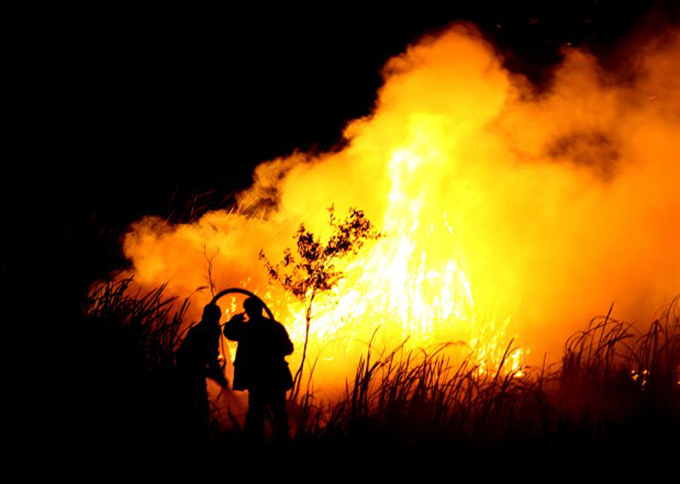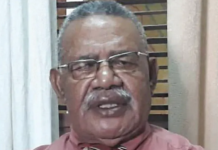
Report by Professor Crispin Maslog in MANILA
As 190 nations grapple with the world’s future at the global climate summit in Paris, forest fires in Indonesia have been continuing to rage since July 2015.
Emissions from this year’s fires have reached 1.62 billion metric tons of CO2, bumping Indonesia up from sixth largest to fourth largest greenhouse gas (GHG) emitter in the world, surpassing Russia in a matter of six weeks and the entire US economy in just 38 days. [1]
Global Forest Watch Fires detected at least 127,000 fires across Indonesia this year, the worst since 1997. These fires were mostly caused by the clearing of forested peat lands to plant palms for oil.
The fires have produced toxic smog smothering Indonesia, Malaysia, Singapore, and as far away as Thailand and the Philippines. The haze closed schools, disabled airports and caused more than 500,000 cases of respiratory illnesses in South-East Asia. More than 40 million Indonesians have been affected.
In preparation for the Paris climate summit, 190 countries that are party to the UN Framework Convention on Climate Change were asked to submit their Intended Nationally Determined Contributions (INDCs) to control carbon emissions. [2]
The UN has received 120 INDCs, which will be used to draft a new international climate agreement towards a “low-carbon and climate-resilient future”.
Eight of the 10-member Association of Southeast Asian Nations (ASEAN) have submitted their INDCs before the 1 October deadline. Only Brunei Darussalam and Malaysia have yet to make submissions.
Conditional target
Cambodia committed to reduce GHG emissions by 27 per cent by 2030, which will be taken from the energy, manufacturing and transport sectors, aside from other industries. But this target is “conditional” on international support. Cambodia also plans to increase its forest cover to 60 per cent of its land area by 2030.
Laos plans to increase its forest cover to 70 per cent of its total land area by the year 2020, with trees and forests serving as GHG sinks. The government also commits to increase the share of renewable energy to 30 per cent of its energy consumption by 2025.
Myanmar has the largest tropical forest area in mainland South-East Asia, so it is already a net GHG sink, its INDC said. But it will need international assistance in its socio-economic development.
The Philippines promised to reduce its carbon emissions by 70 per cent by the year 2030, which will be taken from the energy, transport, waste, forestry and industry sectors. But like Cambodia, the target is “conditional” on assistance from the international community.
Singapore, the first ASEAN country to submit its INDC, said it will unconditionally reduce emissions intensity by 36 per cent by 2030 in energy, industry, agriculture, land use, land-use change, forestry and waste.
Thailand, which is one of 16 countries considered most vulnerable to future climate change impacts in the next 30 years, placed adaptation as top priority and pledged to reduce its GHG emissions by 20 per cent by 2030.
Vietnam promises to unconditionally reduce its GHG emissions by 8 per cent by the year 2030, but the rate could reach 25 per cent with international support. Vietnam has intensified its efforts in forest protection, afforestation and reforestation.
For Indonesia, its INDC pledged to reduce deforestation and cut annual emissions by 29 percent by 2030 is unlikely to be met, however, if it does not put out the forest fires permanently.
Core issues
Observers note that the UN-sponsored climate talks start with countries submitting their INDCs to the planned climate change agreement. That these INDCs, focusing mainly on reducing greenhouse gas emissions, are “nationally determined” suggests that the agreement will have a strong bottom-up approach.
The summit will try to merge the INDCs with “top-down” elements to forge a compromise that assures broad participation and stronger direction. The task, however, will not be easy. Four core issues remain intractable. [3]
Differentiation – Developed countries do not want to have binding emissions targets for developed nations only, which they contend should be for all. Developing nations want the onus to be on the big emitters.
Finance – Developing countries want developed countries to make good on their commitment to mobilise US$100 billion a year in public and private finance by 2020 to establish a Green Climate Fund to finance mitigation and adaptation projects. Developed nations want to have more donor countries so the burden is not entirely on them.
Legal character – While the agreement will have “legal force”, there is no consensus on precisely what form it will take. While the United States, for example, is ready for binding procedural commitments, it opposes binding emission targets.
Transparency – Existing requirements for the reporting of country efforts are two-tiered, with a more rigorous system for developed countries than for developing ones. Developed countries are pushing for a common framework for all parties.
But there is hope that intractable positions in the past might change this time around, in view of undeniable evidence that global warming and climate change are here.
The United States and China have announced that both want a deal. The European Union also has set its target, which accounts for more than half of the world’s emissions. India has begun devoting more attention to climate change.
If only Indonesia can put out its fires and two big Asian economies, Japan and Korea, join the bandwagon, and political will strengthens among the big economies, Paris 2015 could be a landmark for the struggle to mitigate global warming and climate change.
Crispin Maslog is a former journalist and now science journalism professor at the University of the Philippines Los Baños and director of the Silliman School of Journalism, Philippines. He is a consultant of the Asian Institute of Journalism and Communication and board chairperson of the Asian Media Information and Communication Centre, both based in Manila. This piece was produced by SciDev.Net’s South-East Asia & Pacific desk.
References
[1] Nancy Harris et al. With latest fires crisis, Indonesia surpasses Russia as world’s fourth-largest emitter (World Resources Institute, 29 October 2015)
[2] Center for Climate and Energy Solutions Submitted Intended Nationally Determined Contributions (INDCs) (Accessed 14 November 2015)
[3] Elliot Diringer The core issues in the Paris climate talks (Center for Climate and Energy Solutions, 2 November 2015)
Source: Pacific Media Watch 9508














































